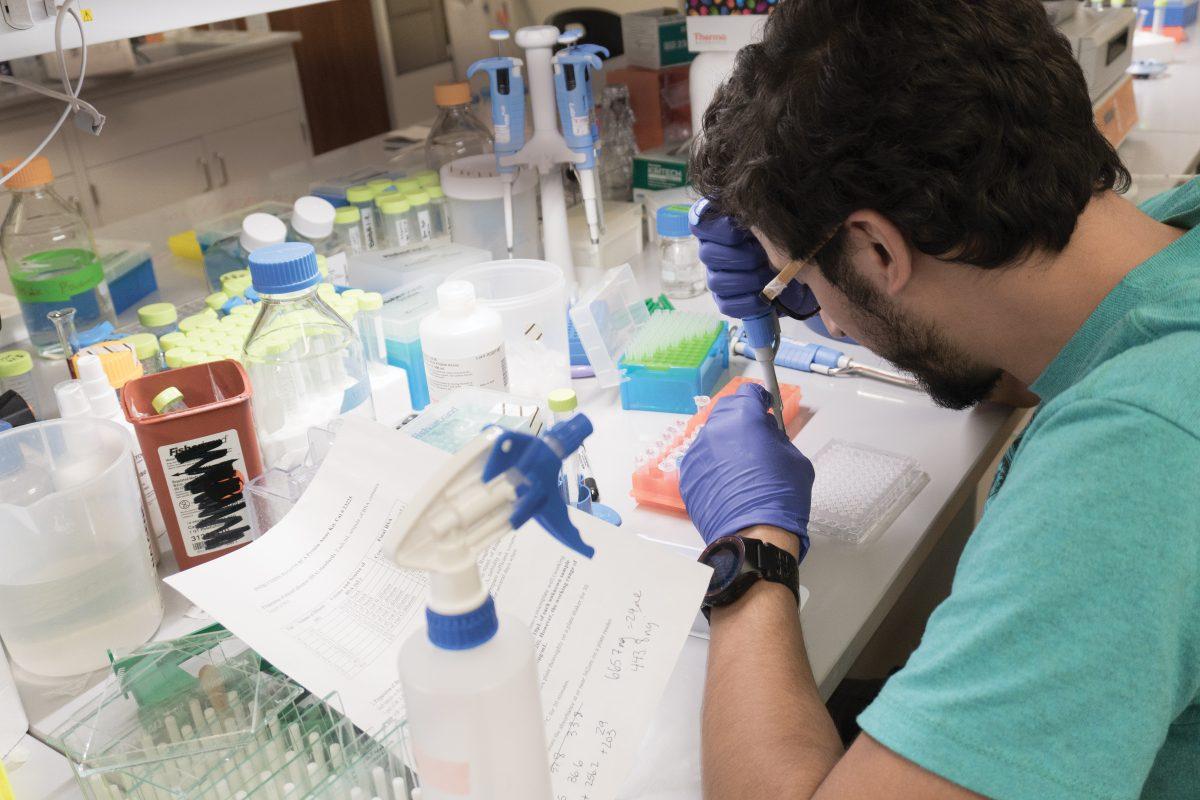In 2011, UTD’s neuroscience professor developed a pain cream to treat persistent pain in his own foot. Years later, Ted’s Pain Cream is available on the market to help consumers with their chronic pain as it awaits FDA approval.
Theodore Price, associate professor and the head of the neuroscience program, introduced Ted’s Pain Cream to the public in 2016. However, it took the neuroscientist years of research in a laboratory and collaboration with various experts in order to develop the pain cream.
Price said his lab, the Pain Neurobiology Research Group, is trying to understand how pain becomes chronic, and find new targets for better treatment.
“Acute pain is treated fairly well in the clinic, but chronic pain is essentially not treated at all,” he said. “Drugs that are used for acute pain don’t work for chronic pain. Sometimes they actually make chronic pain worse.”
Price said he stumbled upon AMP-activated protein kinase — an enzyme that acts as an effective mechanism for blocking the development of chronic pain. The activation of the AMPK dampens the signaling in chemical pathways that cause people to feel pain, even in areas where injuries have healed.
“AMPK is like a fire extinguisher for signaling pathways that increase excitability in neurons,” Price said. “It blocks the hypersensitivity that really is the thing that drive people nuts when they have chronic pain.”
In 2010, Price and his team identified resveratrol to be a potent AMPK activator. Resveratrol is a natural compound found in several plant sources, such as grape skin and Japanese knotweed. Seeing that there wasn’t any resveratrol topical or pain treatment medicine in the market, Price and his team started experimenting with animal models.
The idea to incorporate the research of resveratrol into a pain treatment cream arose when Price first made the cream and used it on himself during his time at the University of Arizona. He had suffered an injury in his ankle and foot while playing basketball years before, and the available products did not help the lingering pain.
“I just could not recover from it,” Price said. “And I was extremely frustrated because I knew that the injury was healed.”
Price suggested the idea of creating a resveratrol topical to his friend, Bo Lian, who was in the pharmacy school at the University of Arizona. When Price tested out the cream Lian made for him, his foot felt better and he was able to play basketball within six hours.
After testing the efficacy of the pain cream on himself, Price started a company called Resveratech, named after the cream’s key ingredient. His project grew in 2014 when Price came back to UTD, where he had completed his undergraduate degree. Price continued his work on the company with Lucas Rodriguez, a former Ph.D. bioengineering student, by making the formulation, raising money and hiring a marketing firm. It was at this time the company changed its name to that of its neuroscientist and founder, Price.
Ted’s Pain Cream did not undergo the FDA’s regulatory approval process. Price said that the cream could make its debut to the public without the clinical trials because resveratrol is included in the FDA’s “Generally Recognized as Safe” list.
Research groups at Washington University in St. Louis and Washington State University will soon be conducting clinical trials for post-surgical pain and chronic musculoskeletal pain, respectively. An FDA approval would be able to show evidence of the efficacy of resveratrol and help lower the cost of the pain cream.
“That would be a total game changer for us because we would then be able to produce this as something that has gone through a vigorous clinical trial and show efficacy and it could be reimbursed by insurance,” Price said.
Price’s research group is currently working on a variety of new topics in pain research, and he said that he hopes to turn scientific discoveries into medicines.
“My dream is that one day we’ll drive down Synergy (Park Boulevard) and there will be a whole bunch of biotech companies that have sprung out of people’s ideas at UTD that are trying to get next generation medicines into the hands of people,” he said.













